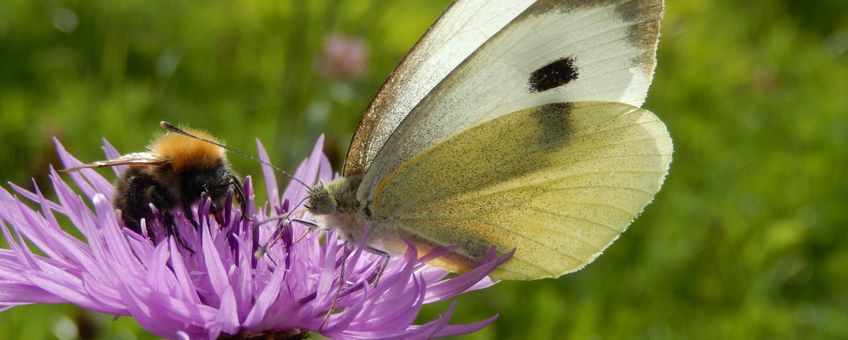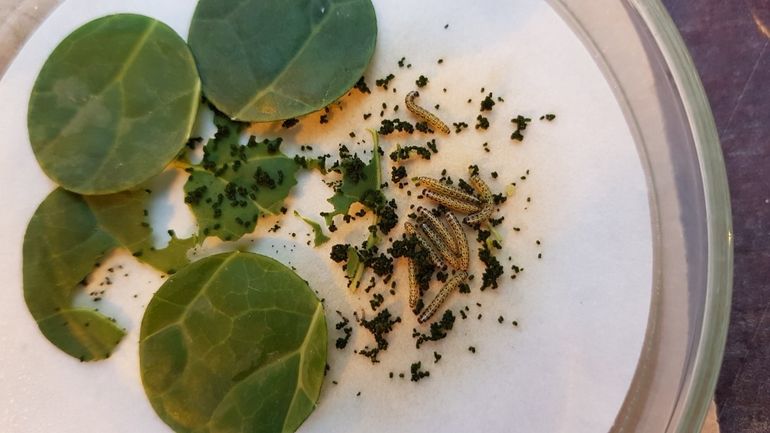
Fipronil seed-coating leads to strongly impaired reproduction in cabbage white butterflies
Dutch Butterfly ConservationUntil recently, seed-coating with fipronil was widely applied in cabbage crops against damage of the cabbage root fly. A newly published article in the Proceedings of the Royal Society B shows that a non-target species, such as the large cabbage white butterfly is also affected, but only after a substantial delay. Scientists from Wageningen UR carried out two experiments to clarify the mechanism.
Seed-coating
In the first experiment caterpillars were put on cabbage plants, grown from seed that was either provided with a fipronil-coating or without. The caterpillars developed well in both cases and pupation also proceeded without complications. The differences only emerged after pupation. The butterflies from the fipronil treatment laid less than half the number of eggs than the butterflies from the control group. Still, fipronil concentrations in the leaves of the plants could barely be detected. The equally toxic degradation products of fipronil were found, however.

Dose-effect relation
In a second experiment a dose-effect relation was established using different dosages of fipronil on cabbage leaf discs. Again, no effects were found until the adult stage. But the butterflies lived shorter and laid fewer eggs at higher fipronil dosage; at the highest concentrations not even a single egg was produced.
Risks of pesticides underlined
The study confirms the risk of unintended side effects of modern pesticides, even at the limits of detection. The negative effects on cabbage whites were not observed during exposure of the caterpillars in the cabbage plant, but only during the reproductive phase of the butterfly. With the current risk assessment procedure on the basis of direct mortality, such delayed effects remain out of consideration. A revision of the test procedure is therefore required.
As a plant protection agent, fipronil is not allowed anymore in the European Union. However, it is still permitted for flea and tick treatment in pets. Because fipronil is resistant to degradation in soil and water, it thus still poses a risk to biodiversity.
More information
Article Reprotoxic effects of the systemic insecticide fipronil on the butterfly Pieris brassicae in the Proceedings of the Royal Society B
Text: Michiel Wallis de Vries, De Vlinderstichting
Photos: Kars Veling (lead photo: large cabbage white and common carder bee); R. Gols
